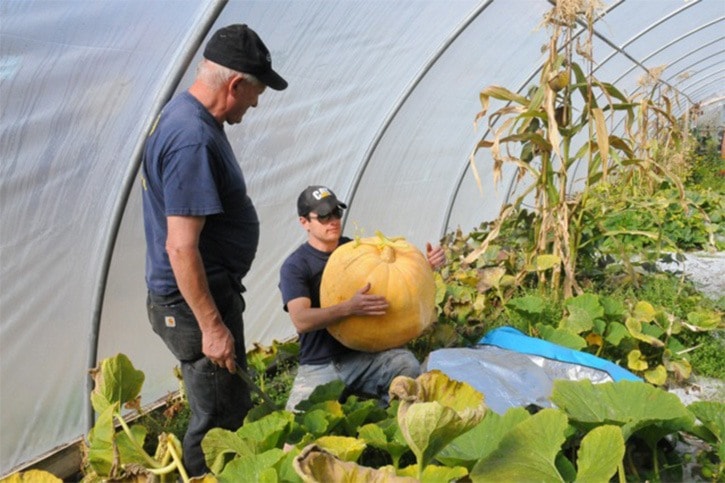Samantha Young-Finch runs a small homestead in Burns Lake with a focus on heirloom, rare and local plants called Bear foot foods.
Among the products that she offers are relishes, salsas and free-run duck and chicken eggs.
Being new to the business, Samantha says one of her main challenges has been to find people who are seeking local food, and making her produce available in a convenient way.
“Connecting to the people seeking local food isn't always easy," said Samantha. "And once you do find them, supply is not always equal to demand because of my small scale and inexperience.”
Over the last few years the region has seen a growing movement toward consumption of locally grown food products, and new initiatives are trying to support local producers such as Samantha.
The Regional District of Bulkley-Nechako (RDBN) started a project in 2014 called ‘connecting consumers and producers’ with the goal of supporting the production of locally grown food products and increasing consumption of local produce.
As part of the RDBN project, about 900 copies of a brochure titled ‘Connecting consumers and producers: a guide for eating local in Bulkley-Nechako’ was distributed throughout the region. The brochure listed 82 local producers and included sections on preserving food, farmer’s market directory and activity pages for kids.
Bob and Rosanne Murray, who provide fresh locally grown produce on their Southside farm, said the RDBN initiative has helped them connect with customers.
“We have had many folks who phone or drop in and say they have found our info in the regional district brochure,” they said.
In addition to the brochure, the project helped organize eight community events in 2015, including farmers’ markets, fall fairs and harvest dinner
celebrations. The RDBN says $6830 of locally produced food was purchased during these events.
Funding was also provided for local libraries within the region to purchase resource books. A total of 121 books were distributed to eight libraries within the region, including Burns Lake.
Apart from the RDBN initiative, the Burns Lake and District Chamber of Commerce has also been trying to support local producers.
This year the chamber hosted their first summer market in Burns Lake, allowing the sale of garden products such as flowers, vegetables, berries, tree-fruits, as well as locally-made arts and crafts, and goods from home-based businesses.
Samantha said the summer market was “a great tool” for her as well as other local producers because it helped them create personal connections to consumers.
“A busy market creates a great environment for buyers and sellers alike,” said Samantha. “The challenge for the market seems to be attracting enough people during market hours; I hope to see the market grow each year.”
Samantha has also been doing her part to connect local producers and consumers by running a Facebook page called ‘Lakes District local foods,’ which currently has 381 members.
“It has been valuable because it’s shown me that a demand exists,” she said. “People are seeking everything from local butter to meat to fruit to veggies; all things we can and do produce on some scale here.”
In addition, Samantha runs the ‘Burns Lake community garden’ Facebook page, keeping the community connected to the new garden and its activities. Although the original allotment garden and fence were built in 2002, the garden was neglected for many years. Earlier this year, the Burns Lake’s partnering 4 healthier communities committee decided to revitalize the space and initiate a community garden. A newly-formed community garden society then completed a number of improvements to the site and generated a great deal of interest, booking all of the beds for 2016.
With all these different efforts taking place across the region, Burns Lake Mayor Luke Strimbold said focusing on agriculture could become a potential priority for the Village of Burns Lake.
“We have seen an increase in demand for agriculture products including vegetables, beef, and hay crops,” he said.
By growing the local food market, these different initiatives may also be improving the economic viability of the agriculture industry in the region.
